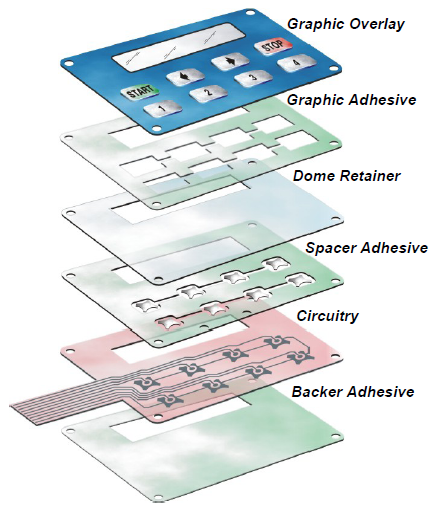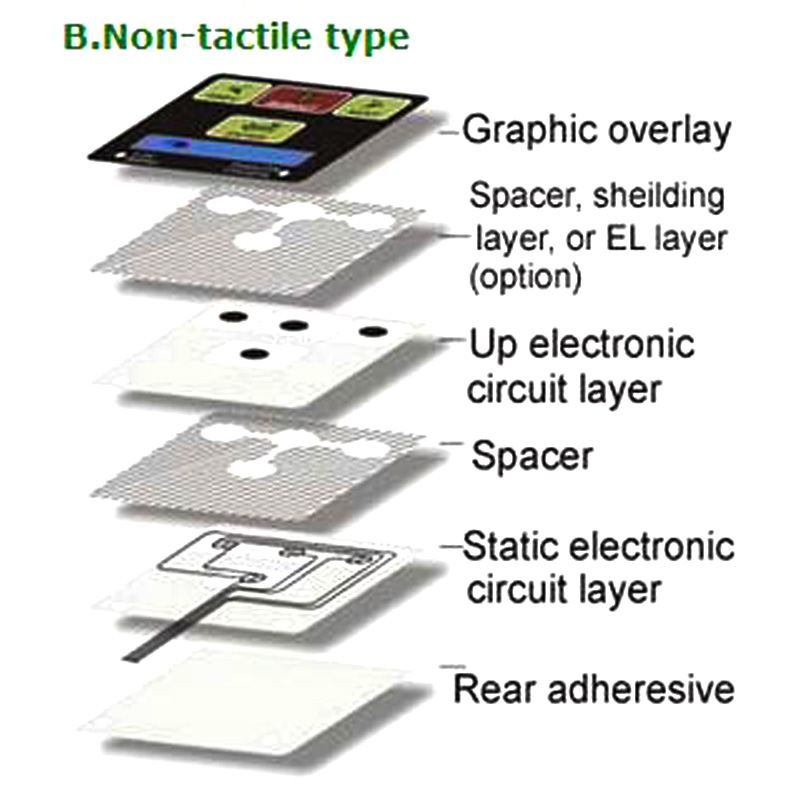Design tips for maximizing membrane switch performance
Recognizing the Relevance of Membrane Layer Change in Modern Electronic Devices
Membrane switches are important components in modern-day digital devices. They supply a blend of functionality and style that boosts individual communication. Their long lasting and lightweight nature makes them appropriate for different applications. As markets advance, the need for customization and progressed attributes expands. Understanding how membrane changes add to advancement discloses their relevance in shaping the future of electronic devices. What exists ahead for this technology?
The Essentials of Membrane Switch Over Modern Technology
Although commonly neglected, membrane switch innovation plays a necessary duty in the contemporary electronics landscape - membrane switch. These tools, made up of numerous layers, act as interface for various digital products, ranging from house appliances to clinical equipment. A normal membrane switch is composed of a visuals overlay, a spacer layer, and a circuit layer, which are carefully set up to create a useful interface.When stress is put on the overlay, the circuit layer is completed, allowing signals to be transferred to the gadget. This innovation is known for its versatility, allowing modification in style, form, and functionality to satisfy details individual needs. In addition, membrane layer switches are thin and lightweight, making them suitable for applications where room is a costs. Their durability and resistance to environmental elements even more boost their allure, ensuring they can endure severe problems while maintaining performance. Overall, membrane button technology is indispensable to producing effective and user-friendly digital tools

Key Advantages of Membrane Switches
Membrane layer switches offer several essential benefits that make them a preferred selection in various digital applications. Their design enables a small kind aspect, allowing suppliers to develop light-weight and streamlined gadgets. In addition, membrane buttons are resistant to dust, moisture, and chemicals, which enhances their longevity and long life in demanding atmospheres. The tactile comments given by these switches can enhance customer experience, making them simple and instinctive to operate.Furthermore, membrane buttons can be customized with diverse graphics and shades, permitting distinct branding possibilities. The production process is usually cost-effective, particularly for high-volume production, as it lowers setting up time and simplifies layout. Membrane switches require very little upkeep, adding to lower total operational expenses. These advantages underscore their expanding appeal in contemporary electronics, where dependability and straightforward user interfaces are important.

Applications Across Different Industries
The adaptability of membrane switches enables their prevalent fostering throughout different markets. In the clinical area, they are typically utilized in diagnostic tools and individual tracking systems, providing a durable interface resistant to pollutants. The automobile market uses membrane layer buttons for dashboard controls, enhancing individual experience with sleek layouts that endure severe problems. In consumer electronic devices, they serve as control panels for gadgets such as microwaves and coffee manufacturers, offering an user-friendly user interface that is simple to tidy. The aerospace industry utilizes membrane layer switches in cabin controls, where integrity and room effectiveness are critical. Additionally, the industrial sector leverages these buttons in equipment and control systems to assure durable operation sought after atmospheres. This broad series of applications emphasizes the adaptability of membrane switches, making them indispensable elements in boosting performance and user communication throughout diverse technical landscapes.
Personalization and Layout Flexibility

Future Fads in Membrane Layer Change Advancement
Emerging trends in membrane button development indicate an expanding focus on improved performance and combination with smart technologies. As consumer need for a lot more advanced electronic devices rises, suppliers are concentrating on producing membrane switches over that not just serve basic operational duties however additionally include features like touch level of sensitivity, backlighting, and haptic feedback.Furthermore, developments in products are anticipated to enhance sturdiness and environmental resistance, making membrane switches over appropriate for diverse applications in industries such as medical care, vehicle, and consumer electronic devices. The combination of capacitive touch technology is most likely to end up being more widespread, enabling for sleeker designs and boosted individual interfaces. membrane switch.Additionally, the surge of the Web of Things (IoT) is motivating the development of membrane layer switches that can connect wirelessly with other tools, enhancing interconnectivity. On the whole, the future of membrane layer button modern technology appears promising, driven by technology and the quest of straightforward services
Regularly Asked Concerns
Just How Do Membrane Changes Contrast to Conventional Mechanical Buttons?
Membrane switches, being a lot more space-efficient and offering a smooth layout, contrast with standard mechanical buttons that provide responsive responses. The former commonly include customizable graphics, while the last typically ensure longevity and reliability in different applications.
What Products Are Commonly Used in Membrane Change Manufacturing?
Membrane layer buttons are typically created utilizing products such as polyester, polycarbonate, and published conductive inks. These products provide sturdiness, versatility, and responsiveness, making them ideal for numerous applications in digital tools and interface.
Can Membrane Layer Switches Over Be Fixed or Recycled?
Membrane buttons can usually be fixed, especially if minor problems emerge, such as glue failing or surface damage. Total reuse is usually limited due to put on and prospective degradation of products over time.
How Do Ecological Aspects Affect Membrane Layer Switch Efficiency?
Environmental factors, such as view publisher site temperature level, humidity, and direct exposure to chemicals, considerably influence membrane layer switch efficiency. Severe conditions can bring about index deterioration, affecting responsiveness and durability, inevitably jeopardizing the capability of the device in numerous applications.
What Is the Typical Life Expectancy of a Membrane Layer Change?
The regular lifespan of a membrane button generally ranges from 1 to 5 million actuations, relying on factors such as usage frequency, ecological problems, and the products used in manufacturing, influencing toughness and efficiency longevity. A common membrane layer button consists of a graphic overlay, a spacer layer, and a circuit layer, which are thoroughly constructed to create a functional interface - membrane switch.When pressure is used to the overlay, the circuit layer is finished, permitting signals to be transmitted to the device. The tactile comments supplied by these buttons can boost user experience, making them simple and user-friendly to operate.Furthermore, membrane layer buttons can be tailored with varied graphics and shades, permitting for unique branding opportunities. As consumer demand for more sophisticated electronic devices increases, makers are focusing on creating membrane switches that not just offer standard functional duties however likewise integrate functions like touch sensitivity, backlighting, and haptic feedback.Furthermore, improvements in materials are expected to improve durability and environmental resistance, making membrane layer great post to read switches over appropriate for diverse applications in industries such as healthcare, automotive, and customer electronics. The integration of capacitive touch technology is most likely to come to be a lot more common, allowing for sleeker layouts and enhanced individual interfaces.Additionally, the rise of the Net of Points (IoT) is triggering the development of membrane layer changes that can communicate wirelessly with various other gadgets, improving interconnectivity. Membrane buttons, being much more space-efficient and offering a streamlined style, comparison with standard mechanical switches that give tactile comments